|
ENDURANCE ship
The ship Endurance was a three-masted
barquentine built by Framnaes Shipyard, Sandefjord in
Norway and was launched in 1912. She was built under the
supervision of master wood shipbuilder Christian
Jacobsen, who was renowned for insisting that all men in
his employment were not just skilled shipwrights but
also be experienced in seafaring aboard whaling or
sealing ships.
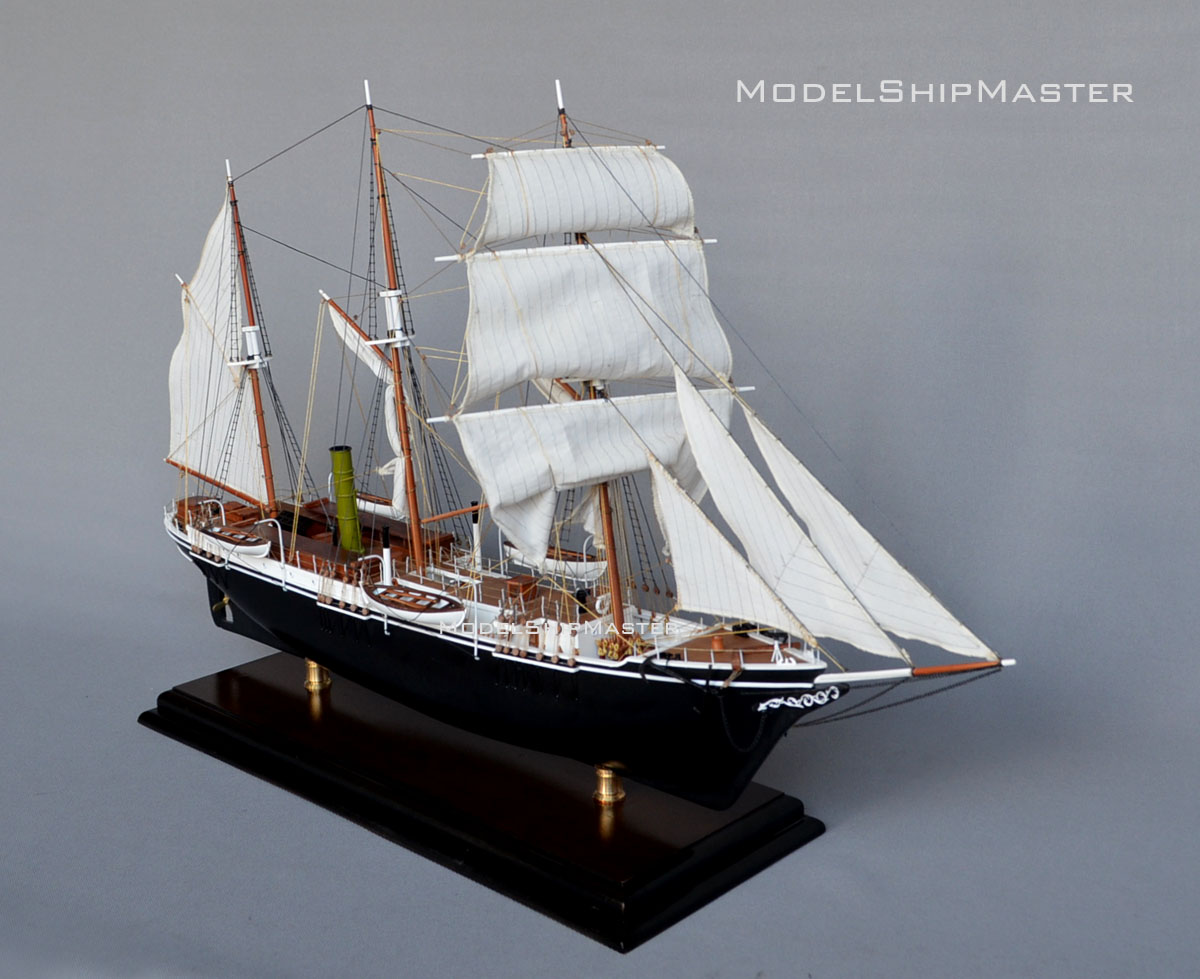
Endurance ship's hull was designed for polar conditions with a very sturdy
construction. Her keel was comprised of four pieces of
solid oak, one above the other, adding up to a thickness
of 85 inches, while its sides were between 30 inches and
18 inches thick, with twice as many frames as normal and
the frames being of double thickness. The planks were
oak and Norwegian fir that were about to 30 inches
thick. Every joint and fitting was cross-braced
for maximum strength.
Endurance's bow would meet the ice
head-on. Each timber
had been made from a single oak tree chosen for its
shape so that its natural shape followed the curve of
the ship's design. When put together, these pieces had a
thickness of 52 inches. Endurance ship was not intended
to be frozen into heavy pack ice, and so was not
designed to rise out of a crush. In such a situation she
was dependent on the ultimate strength of her hull alone.
Endurance was 144 feet long, with a 25
feet beam, and measured 348 tons gross. She
had a 350 horsepower coal-fired steam engine combined
with sails and was capable of speeds up to 10.2 knots.
She had a complement of 28.
The Endurance ship was originally built
as
Polaris for
Adrien de Gerlache and Lars Christensen. Financial
problems led to Gerlache pulling out of their
partnership, leaving Christensen unable to pay the
Framnæs yard the final amounts to hand over and outfit
the ship. Christensen sold the ship to Ernest Shackleton for
GB£11,600--a significant loss.
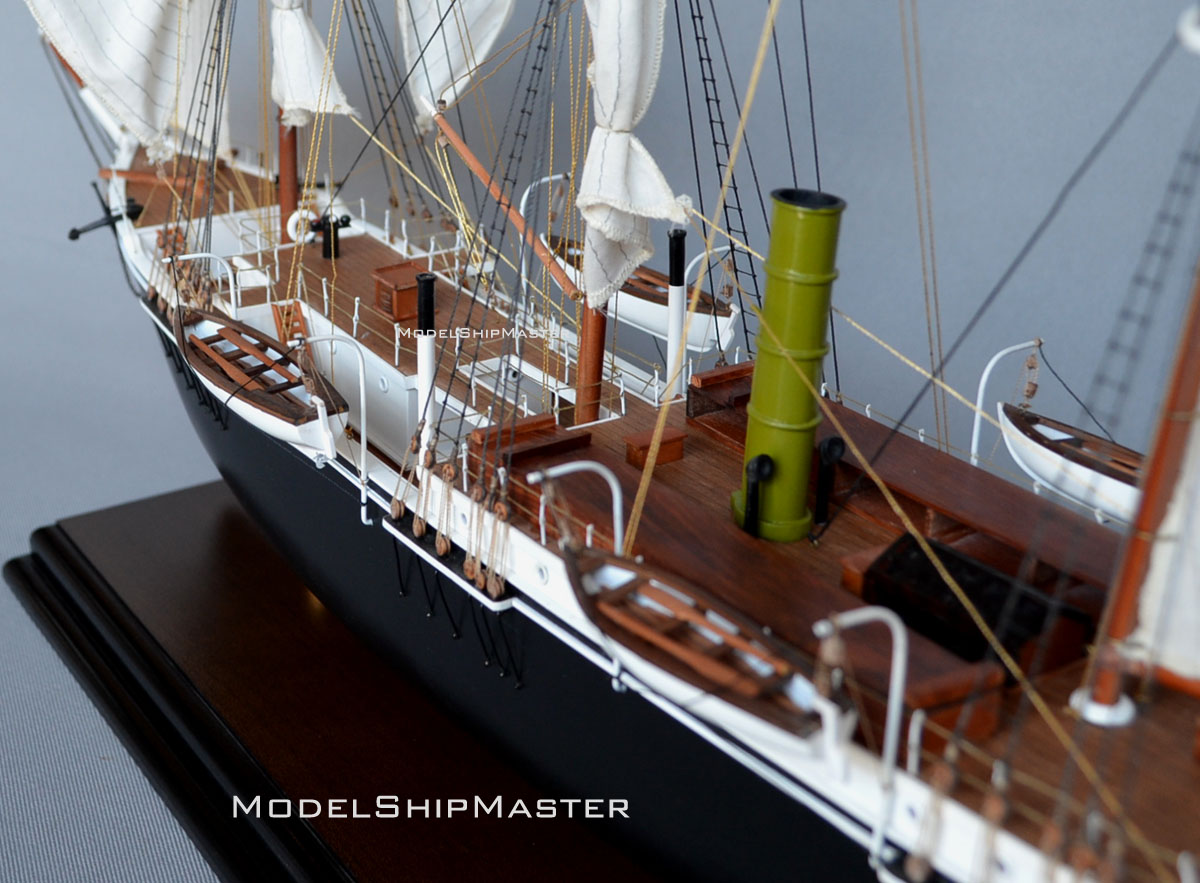
Shackleton
had Endurance relocated from Norway to London. She
arrived at the Millwall Dock in the spring of 1914,
where she was refitted and modified for expedition
purposes. She was stripped of most of her luxurious
accommodation and fittings. The refit also saw the ship
repainted from her original white color to a more
austere black, which was more visible amongst ice, and
features such as gilt scrollwork on the bow and stern
were painted over.
Endurance's new equipment included four boats. Two were
21-foot transom-built rowing cutters purchased
secondhand from the whaling industry. The third was a
larger 22.5-foot double-ended rowing whaleboat built for
the expedition to specifications drawn up by Frank
Worsley, Endurance's new captain. The fourth was a
smaller motorboat.
On 26 October 1914, ship Endurance sailed from Buenos Aires
to her last port of call, the whaling station at Grytviken on the island of South Georgia. She left
Grytviken on 5 December 1914, heading for the southern
regions of the Weddell Sea.
On 18
January, after two days sheltering and waiting for
better ice condition, Shackleton decided to break
through a heavy pack ice. Endurance entered the pack at
5 PM. Unfortunately, This ice was different from what
had been encountered before, and the ship was soon
amongst thick but soft brash ice, and became beset, only
sixty miles from her intended destination.
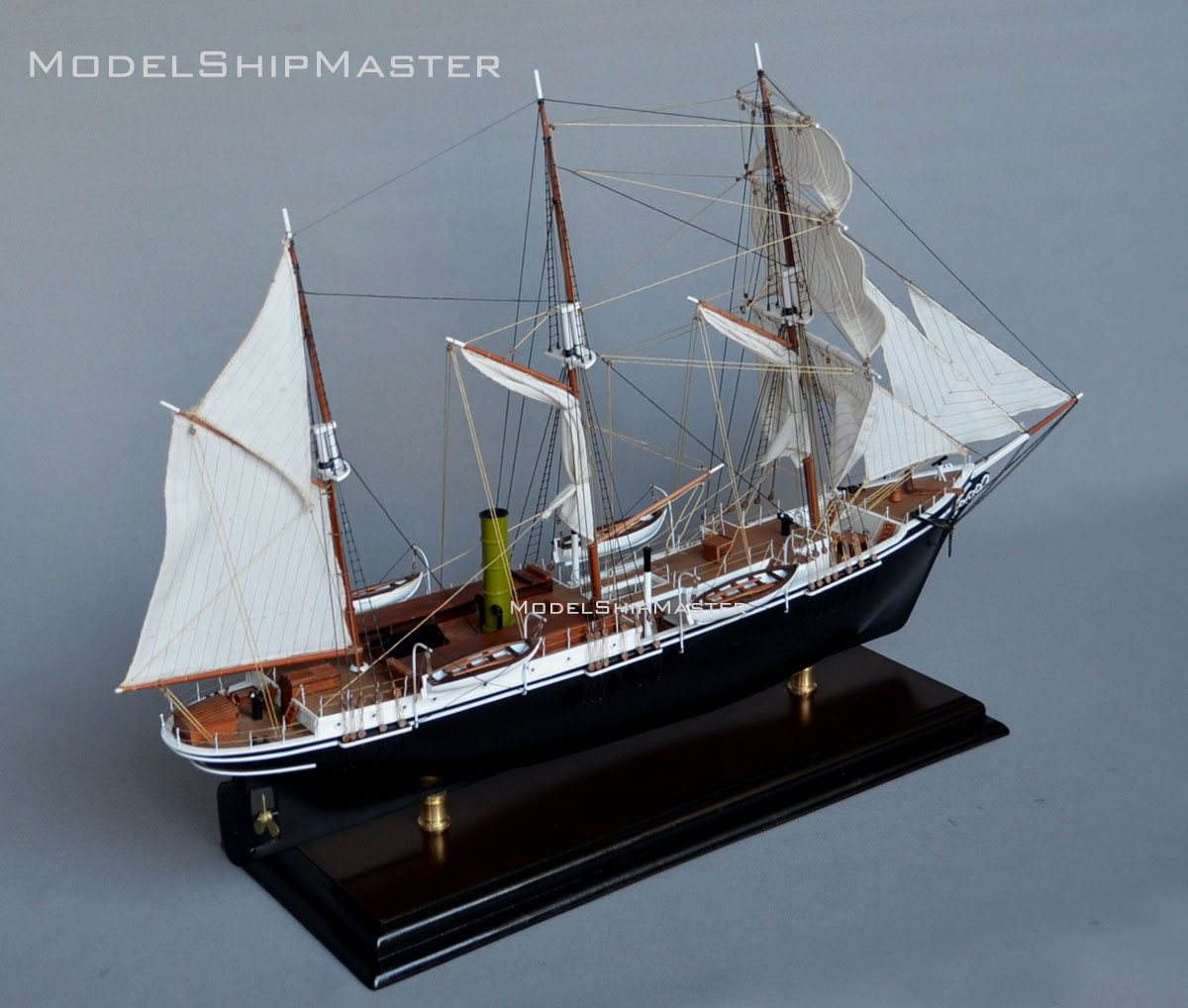
Ship Endurance
drifted within the ice pack for nine months,
sometimes in a small pool of water within the pack. The
crew kept fighting hard to break the ship free, ramming
the ice, with limited success. Endurance was battered by
pressure wave and damaged section by section. The screw
fought valiantly to save her but in the end must
evacuate, on 25 October, 2015. They camped about two
miles from the wreck.
Over the course of a week, the screw kept
going back to the ship to salvage remaining items under
harsh freezing water condition, including cutting
through the main deck. In
total, nearly 3.5 tons of stores were recovered from the
wrecked ship. The forward topgallant mast and topmasts
collapsed as the bow was finally crushed. These moments
were recorded on
film by expedition photographer Frank Hurley. The ensign was re-rigged on the tip of one of
the foremast yardarms which was the highest point of the
wreck.
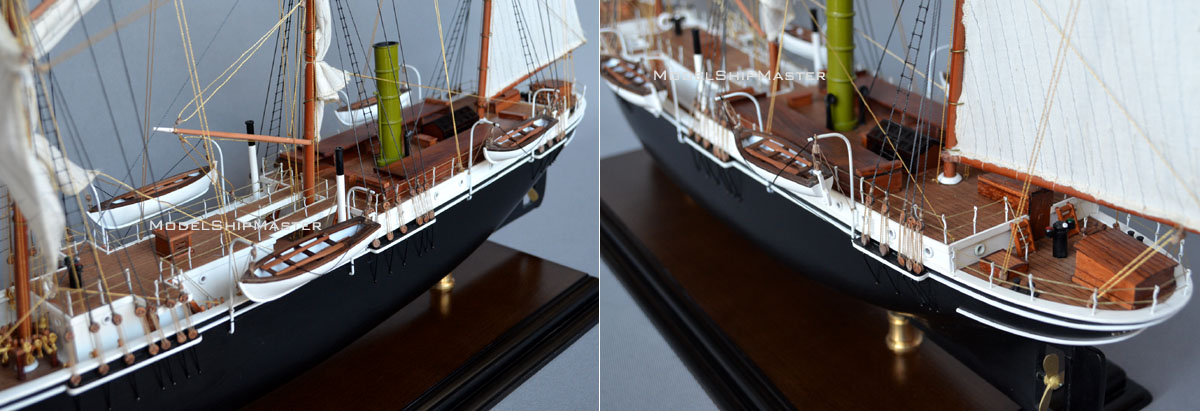
In the
late afternoon of 21 November, movement of the remaining
wreckage was noticed as another pressure wave hit.
Within a minute, the stern of the ship Endurance was lifted
clear of the ice as the floes moved together and then,
as the pressure passed and they moved apart, the entire
wreck fell into the ocean. By daylight the following
day, the ice surrounding the spot where
the Endurance had sunk had moved together again,
obliterating any trace of the wreck. The position was
68° 38.5'S 52° 58'W.
The crew
of 28 used the three boats to row and sail towards the
uninhabited Elephant Island, which they reached four
months later in April 1916.
Realizing
that there was no chance of passive rescue, Shackleton
decided to sail to South Georgia. Shackleton sailed with
Tom Crean, Frank Worsley, Harry "Chippy" McNish, Tim
McCarthy, and John Vincent on an 800 mi voyage in the
open lifeboat beginning on Easter Monday, April 24,
1916. He arrived 16 days later. His second-in-command,
Frank Wild, was left in charge of the remaining party on
Elephant Island, waiting for Shackleton's return with a
rescue ship.
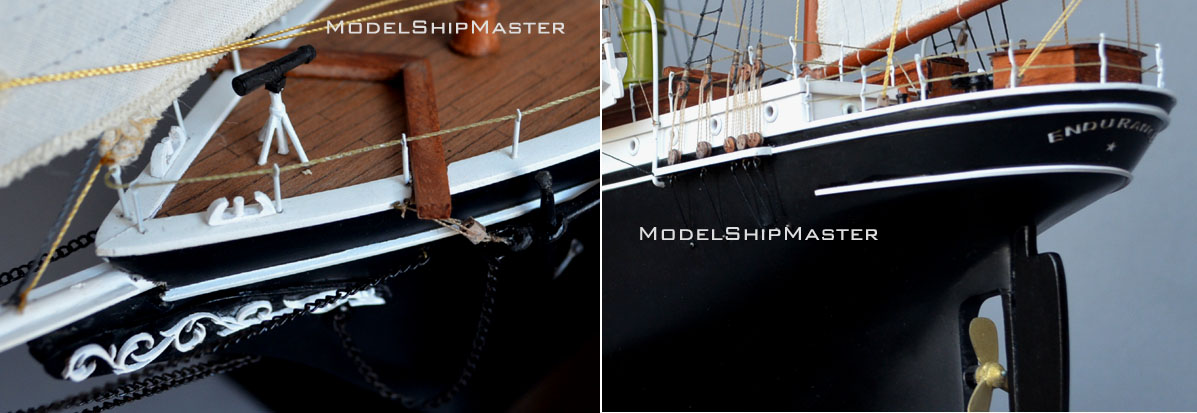
There was
much work for the stranded men. Because the island had
no natural source of shelter, they constructed a shack
and wind blocks from their remaining two lifeboats and
pieces of canvas tents. Blubber lamps were used for
lighting. They hunted for penguins and seals, neither of
which were plentiful in autumn or winter. Shackleton
instructed Wild to depart with the crew for Deception
Island if he did not return to rescue them by the
beginning of summer, but after four and a half months,
on August 30, 1916, artist George Marston spotted a
ship. The ship, with Shackleton on board, was the tug
Yelcho, from Punta Arenas, Chile, rescued all the men
who had set out on the original expedition.
Shackleton’s determination and ingenuity on the
Endurance ship expedition earned him a place in the history
of exploration. According to legend, Shackleton posted
an advertisement in a London paper, stating: "Men wanted
for hazardous journey. Low wages, bitter cold, long
hours of complete darkness. Safe return doubtful. Honour
and recognition in event of success."
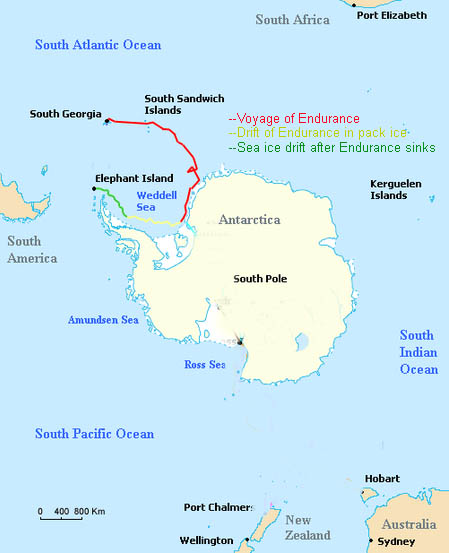 |
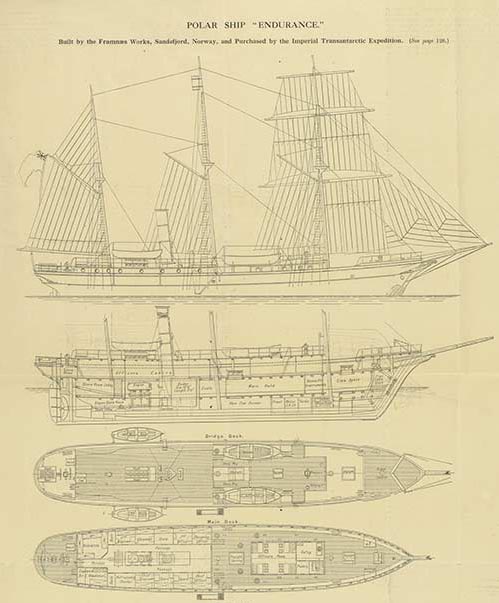 |

This primarily wood,
plank-on-frame model of the Endurance ship is 30" long
x 19" tall x 7.5 wide.
$3,960, shipping
and insurance in the contiguous US included.
Other places:
$400 flat rate.
We require only a
small commitment deposit (not full amount, not even
half) to build your model
$900  The
remaining balance won't be due until the model is
completed.
Please click
here
for lead time
The
remaining balance won't be due until the model is
completed.
Please click
here
for lead time
Don't be
fooled by some bad mass produced Endurance models out
there. They have ridiculous hull shape, shiny paint like
a children plastic toy (a tough tall ship with
yacht-like paint look?), ugly yellowish deck, bad boats,
and numerous other wrong details. Such a disservice to
sir Shackleton's magnificent ship.
"I just wanted
to let you know that I received the Endurance and case
today in perfect condition. I just finished uncrating
it. The model is magnificent. I can’t thank you enough
for your meticulous workmanship. Every detail is so
appreciated. I look forward to enjoying this beautiful
piece for a lifetime to come. Thank you! Warm regards,
Craig."
Learn more about the
Endurance here:
https://en.wikipedia.org/wiki/Endurance_(1912_ship)
|